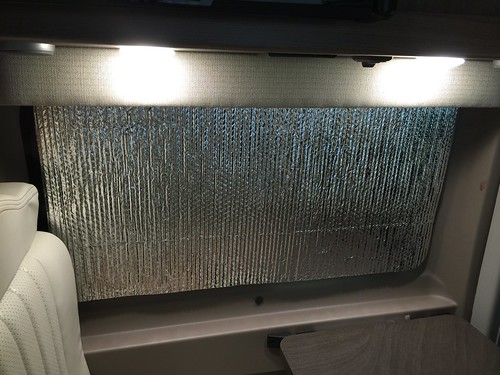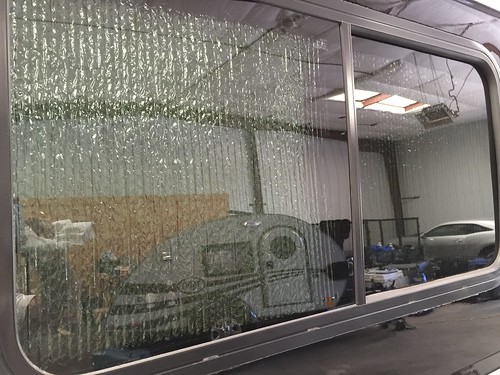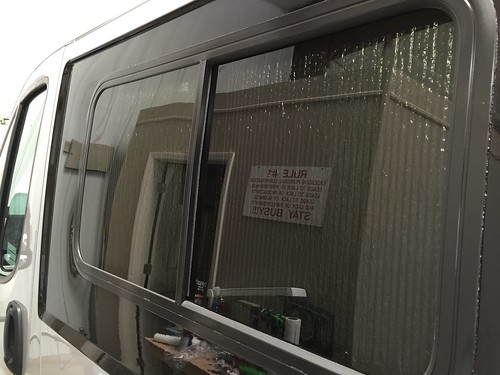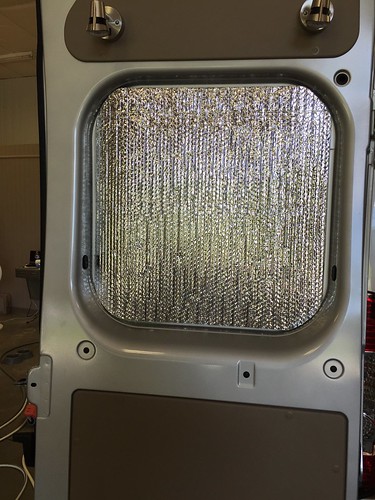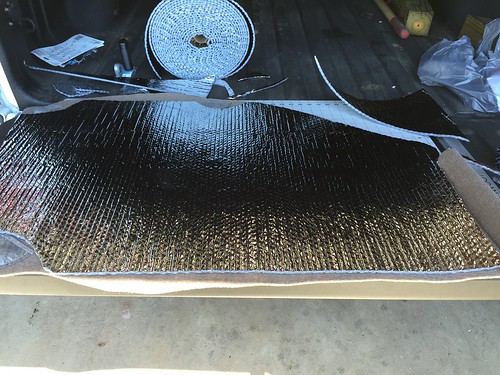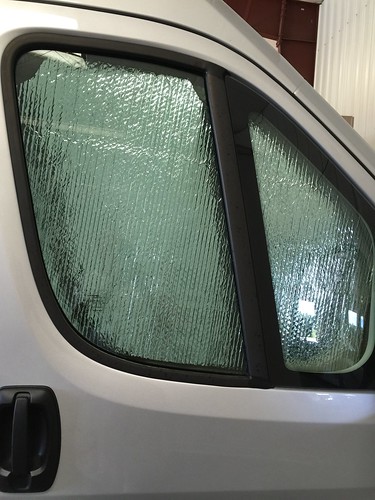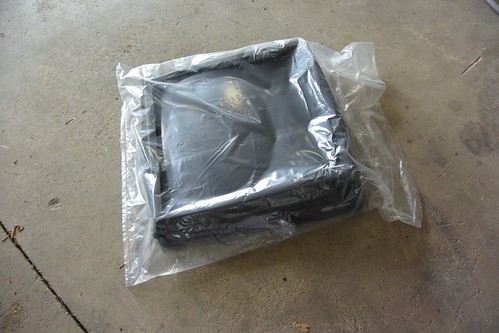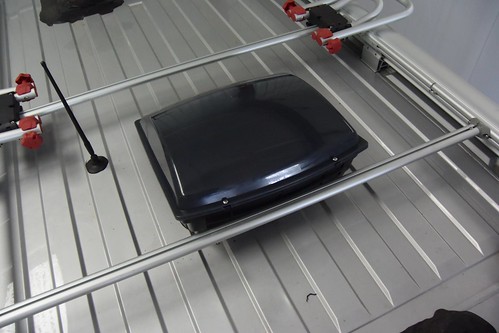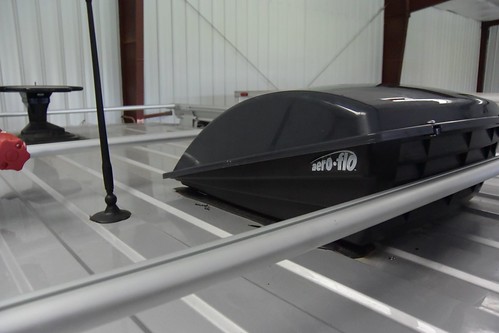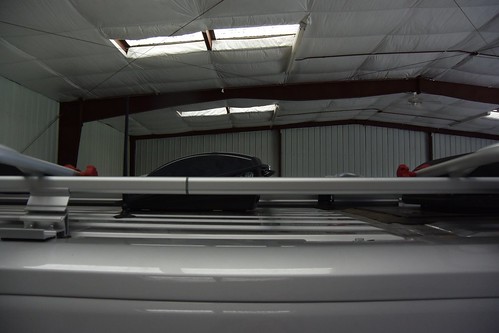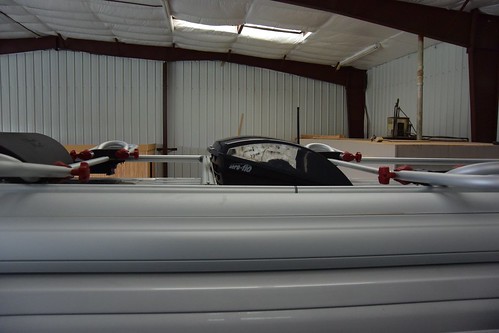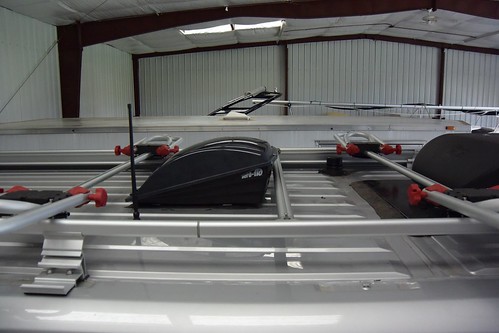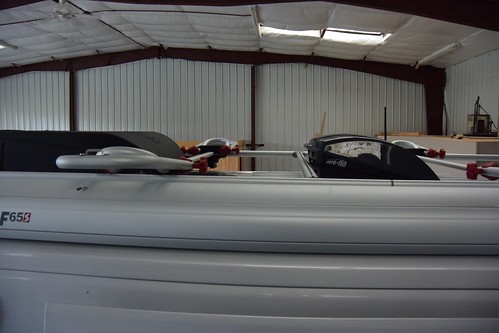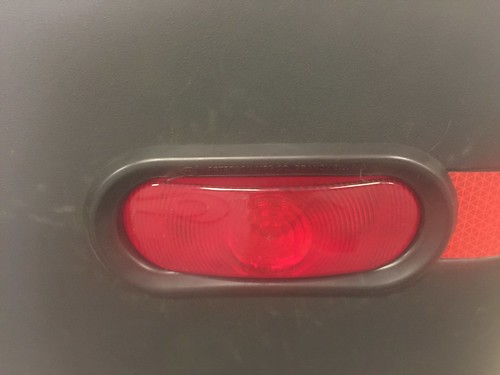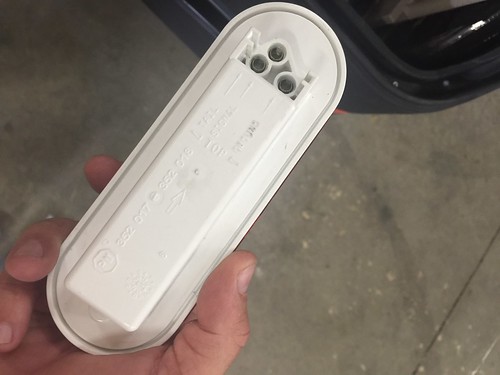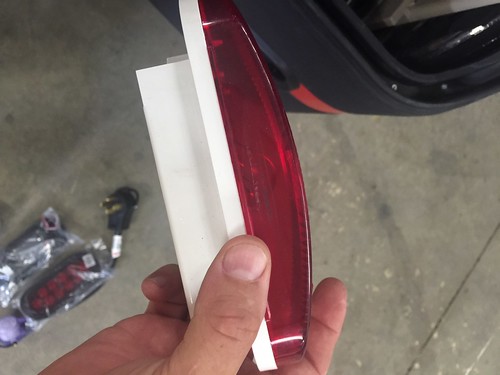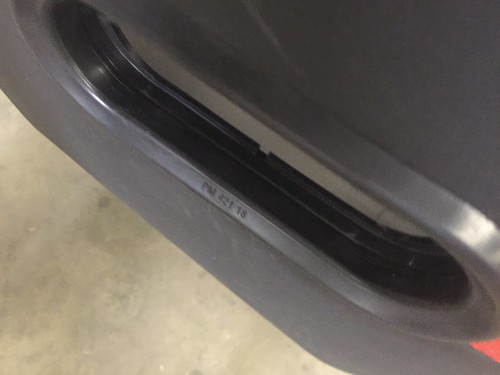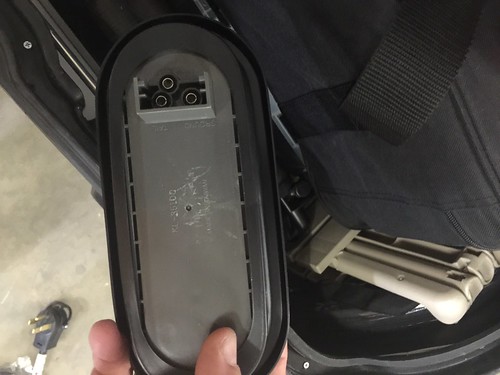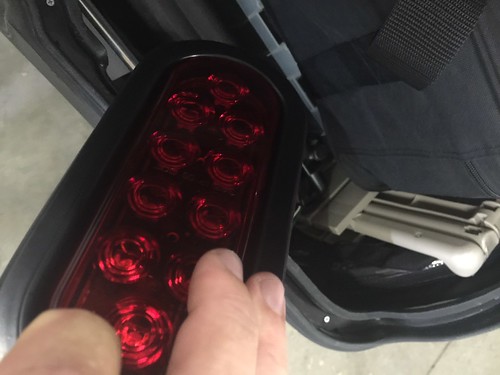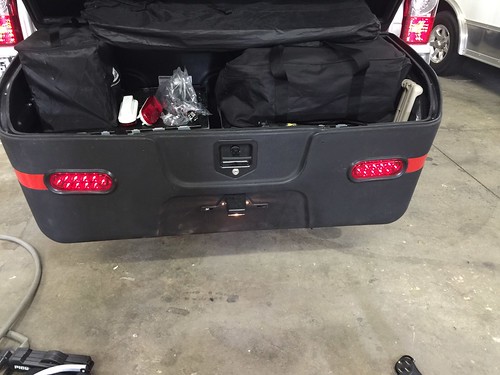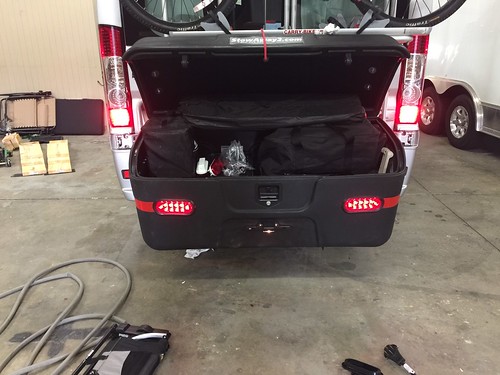So I wanted to make some window covers to give a bit more darkness, privacy and maybe to keep out some of this summer heat. I got a 50' roll on Amazon for around $50.
Not a tough project, just measure your windows and cut the stuff to match with either a box cutter or just scissors. I used a red disposable cups to do the corner curves.
The two driver side cabin windows are the same size, so you just measure one and then copy it for the second. To hold them on, you just cut some velcro and stick to both the cover and the window frame. You cut it thinner to apply to the frame, and longer and wider on the cover so you don't have to be so precise on sticking it on. Here it is stuck on at the dinnette.
Since the windows are tinted, it already looks pretty dark. I'm toying with the idea of spray painting it will some Rustoleum for plastics. Paint only one side - so you have the choice of having a "black" look, or the reflective look.
For the back doors, the bare metal is exposed, so I just used magnet tape. It's cheap at Lowes and you just cut, peel and stick. I like how these turned out very much. You can still use the curtains, but you don't really need to.
For the cab covers, I just laid out the "mouse fur" ones that came with the van. Just cut the reflectix to match, cutting out around the magnets that hold it to the doors. Then just velcro to the original cover. You can always just take it off if you don't want to use it.
This is how it looks installed.
For the front window, I did it the same way, but I had to tape several peices of reflectix together with duct tape as the windshield is much wider than my roll of material.
So with all this in place, it's totally blacked out inside the van. Good for sleeping, good for privacy, and a bit more insulation. All of this will store in the cubby above the cab.
Sunday, June 28, 2015
Saturday, June 27, 2015
Camco Aero Flow Vent Cover
Today I installed a vent cover on my Travato. Having this cover, you can leave the roof vent open on a rainy day. It's not as nice as having the MaxxAir fan on my Oliver, but this gives me largely the same effect for only $28.
It came in a bag from Amazon, put in a brown cardboard box. No fancy packaging.
It's a pretty simple install. You line up the brackets along side the vent's frame and mark the hole locations. Then drill out the holes. For this type of Fantastik vent fan, you have to use the self tapping screws, as you can't reach inside to install machine screws and nuts.
Just to be safe, I also put VHB tape on the brackets to hold them in place.
Here is the finished product. Note that it doesn't stick up as much as the other types. You can only open the vent about 3/4 of the way. Plenty for air flow.
I did have to move the roof rack cross bar a few inches. No big deal, it's held in place with allen head screws. Just loosen them, slide the bar down, and then re-tighten. I like that the cover is made with a hinge - you just loosen the two screws and open it up for cleaning inside.
From the streetside:
Doesn't look like it sticks up higher than the AC unit.
It wasn't too bad getting up and walking on the roof. You do have to be extremely careful though. A smart guy would put mats up there to walk on. Otherwise it's very easy to dent the roof with your knees and elbows. Feet seem to do OK.
It came in a bag from Amazon, put in a brown cardboard box. No fancy packaging.
It's a pretty simple install. You line up the brackets along side the vent's frame and mark the hole locations. Then drill out the holes. For this type of Fantastik vent fan, you have to use the self tapping screws, as you can't reach inside to install machine screws and nuts.
Just to be safe, I also put VHB tape on the brackets to hold them in place.
Here is the finished product. Note that it doesn't stick up as much as the other types. You can only open the vent about 3/4 of the way. Plenty for air flow.
I did have to move the roof rack cross bar a few inches. No big deal, it's held in place with allen head screws. Just loosen them, slide the bar down, and then re-tighten. I like that the cover is made with a hinge - you just loosen the two screws and open it up for cleaning inside.
From the streetside:
From the from the curbside. From the ground, you can't even see it up there.
Doesn't look like it sticks up higher than the AC unit.
It wasn't too bad getting up and walking on the roof. You do have to be extremely careful though. A smart guy would put mats up there to walk on. Otherwise it's very easy to dent the roof with your knees and elbows. Feet seem to do OK.
Monday, June 8, 2015
Changing the Stowaway2 lights to LED
A few weeks ago, I noticed that one of the lights on the Stowaway2 was not working. The turn signal/brake light element was burned out. So I went to take it apart to change the bulb and discovered these are sealed units! So you have to buy a whole new $10 light when all you need is a $0.50 bulb!
So if I was going to go to that expense, I might as well get LED lights to replace them and hopefully, never have to do it again. So for around $20 I got these on Amazon:
Red Oval Sealed LED Lights
These are the original incandescent lights:
The units are marked with the size - 421. That must be some kind of standard. Both the light assembly and the gasket are marked with this number.
The gasket holds the light in place with just pressure. The trick is that the gasket goes in from the outside - in. The light is put in from the inside - out.
The new LED fixture is much thinner, but the housing has the exact same length and height measurements, so it fits in the existing gasket perfectly. It did come with new gaskets, but mine were in perfect condition and not very old, so I just reused them and put the new ones on the shelf for later.
Here they are with the brake pedal depressed. I guess they are a bit brighter.
One side benefit is, since they are a bit thinner, the fixtures and the wiring don't protrude into the interior of the box as much, so they are less likely to get snagged by any items banging around in there.
So if I was going to go to that expense, I might as well get LED lights to replace them and hopefully, never have to do it again. So for around $20 I got these on Amazon:
Red Oval Sealed LED Lights
These are the original incandescent lights:
The units are marked with the size - 421. That must be some kind of standard. Both the light assembly and the gasket are marked with this number.
The fixture is kinda chunky. Probably because the bulbs are rather large. Note the wiring connectors. This is universal too. One marked Tail, one marked Signal, and one marked Ground.
The gasket holds the light in place with just pressure. The trick is that the gasket goes in from the outside - in. The light is put in from the inside - out.
The new LED fixture is much thinner, but the housing has the exact same length and height measurements, so it fits in the existing gasket perfectly. It did come with new gaskets, but mine were in perfect condition and not very old, so I just reused them and put the new ones on the shelf for later.
Here they are installed. Took all of 5 minutes. This is illuminated in running light mode.
Here they are with the brake pedal depressed. I guess they are a bit brighter.
One side benefit is, since they are a bit thinner, the fixtures and the wiring don't protrude into the interior of the box as much, so they are less likely to get snagged by any items banging around in there.
